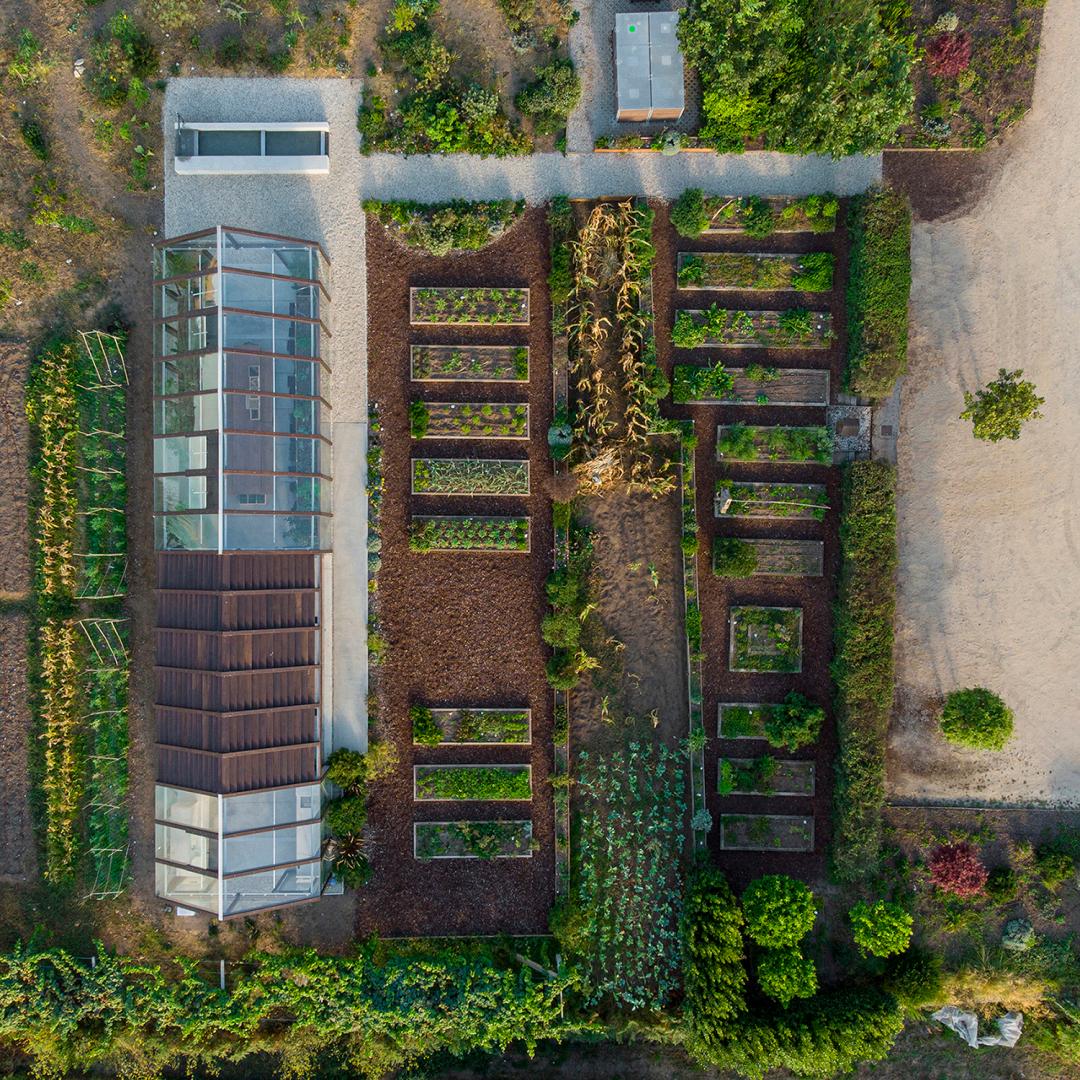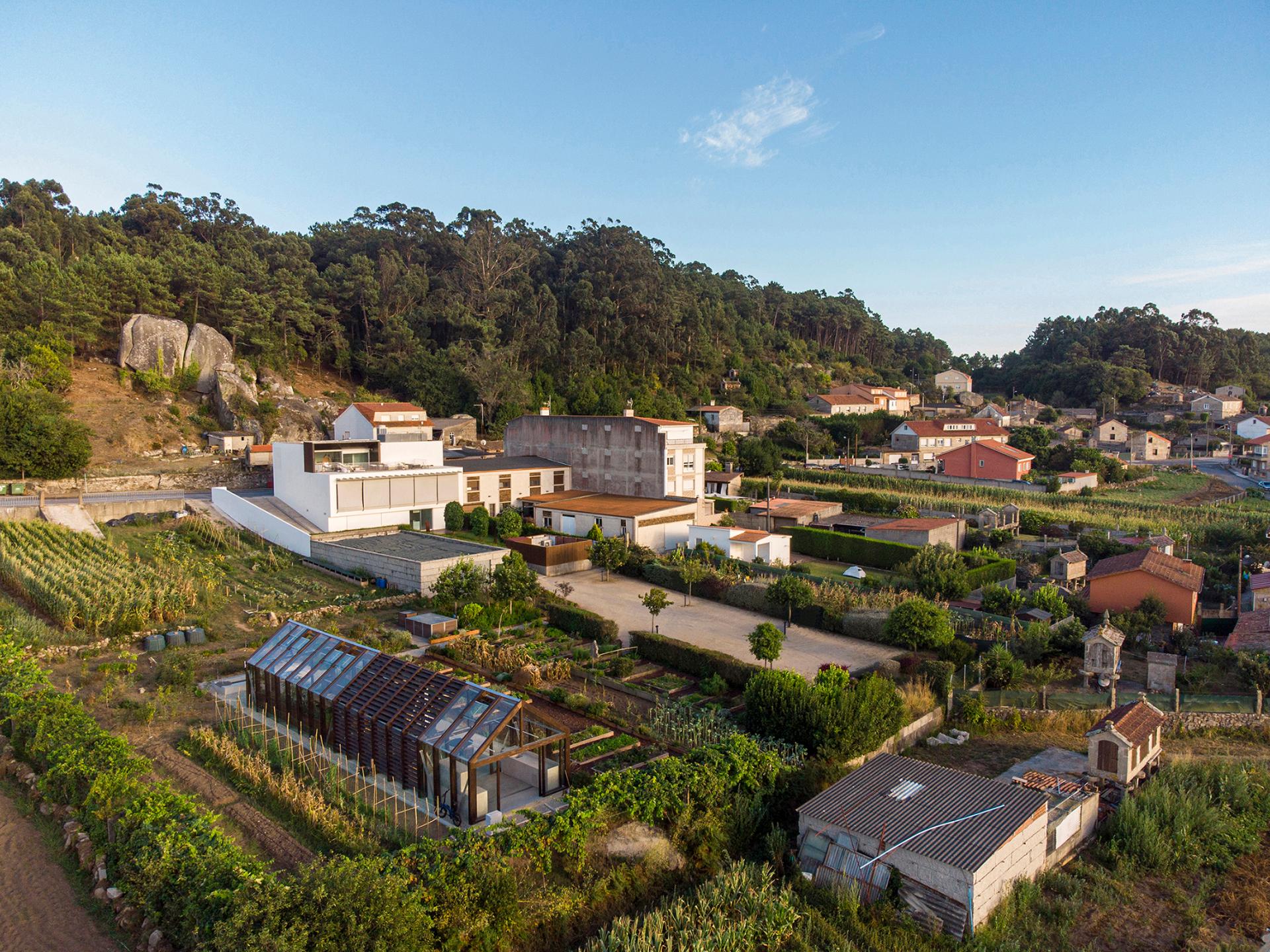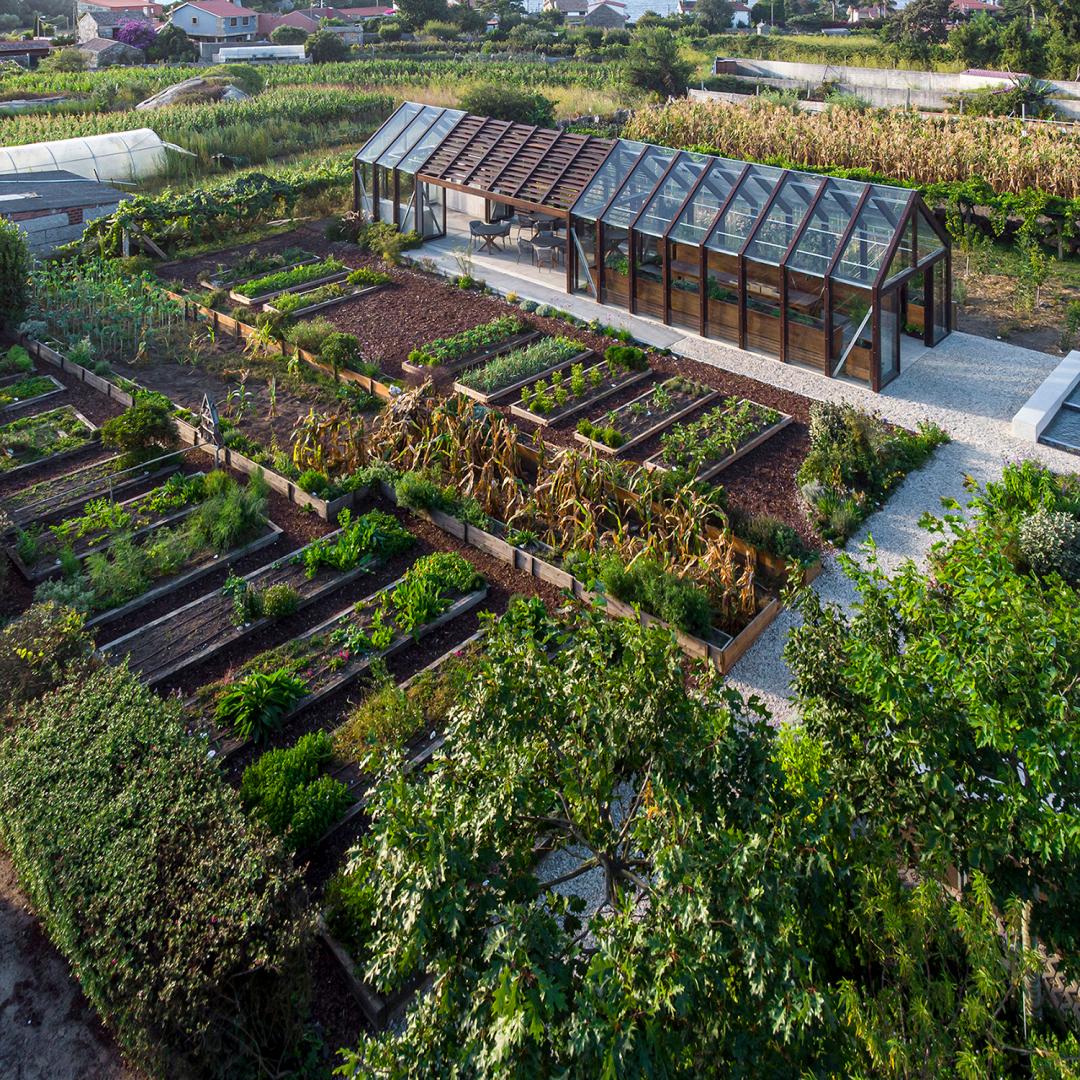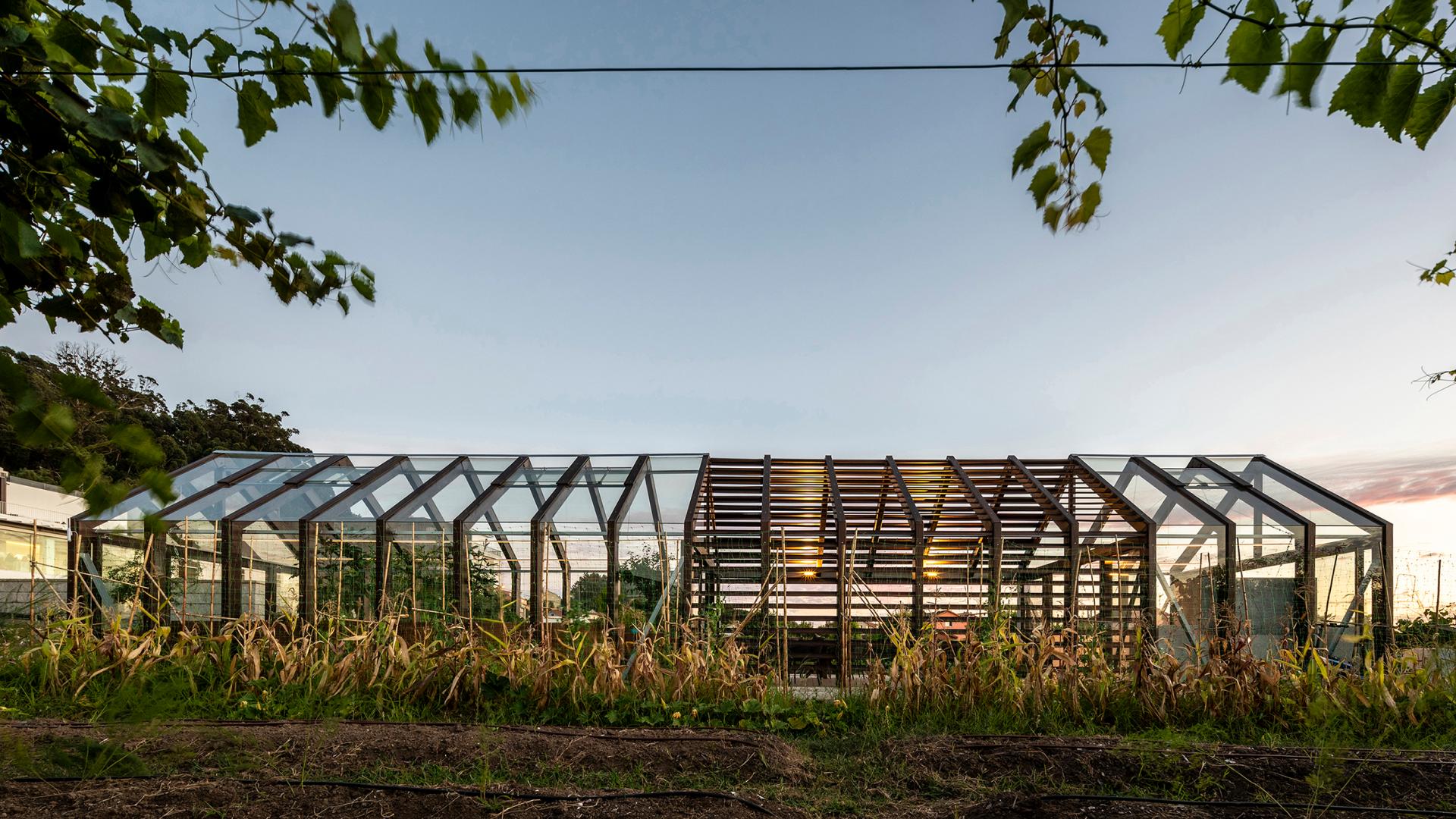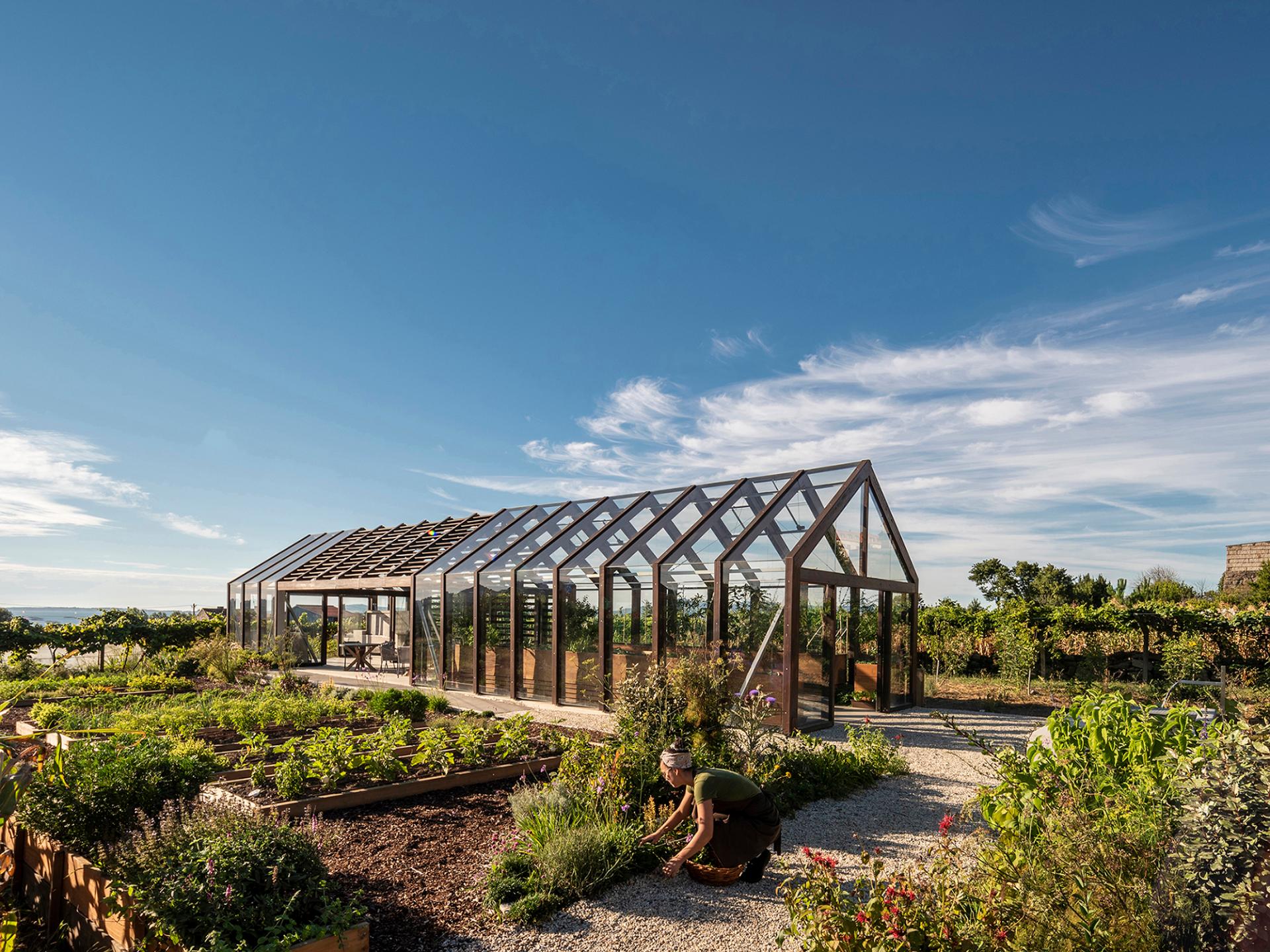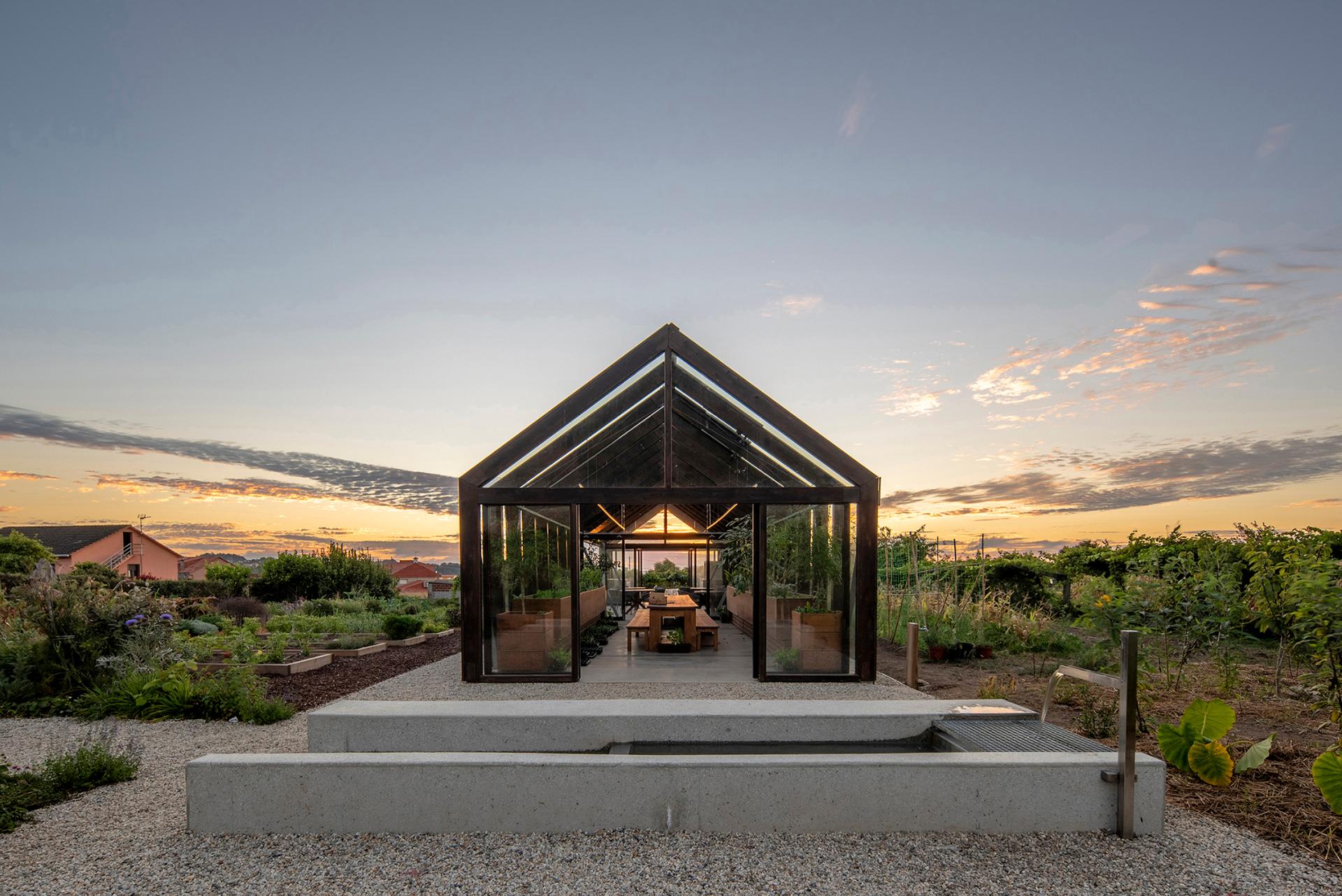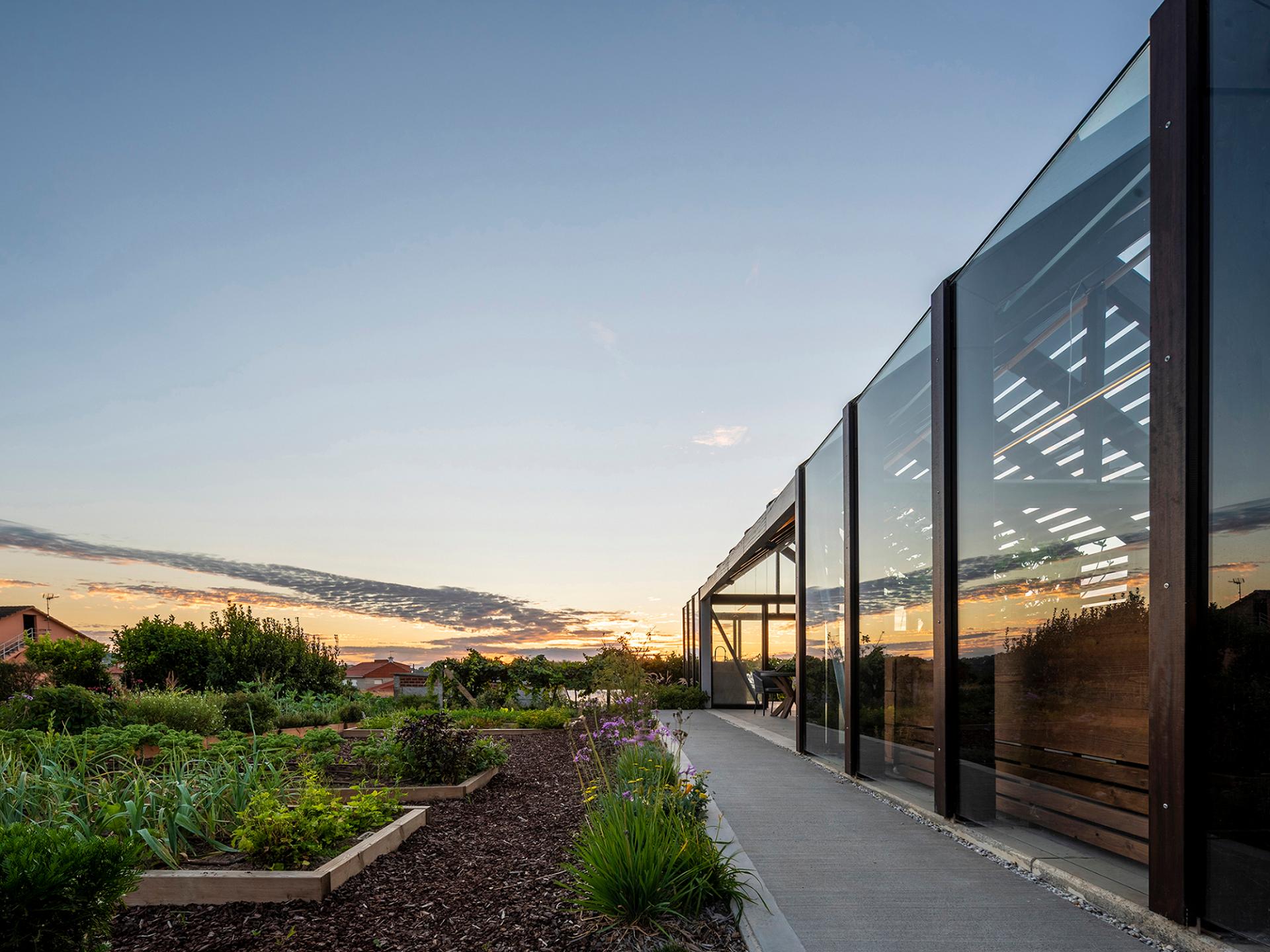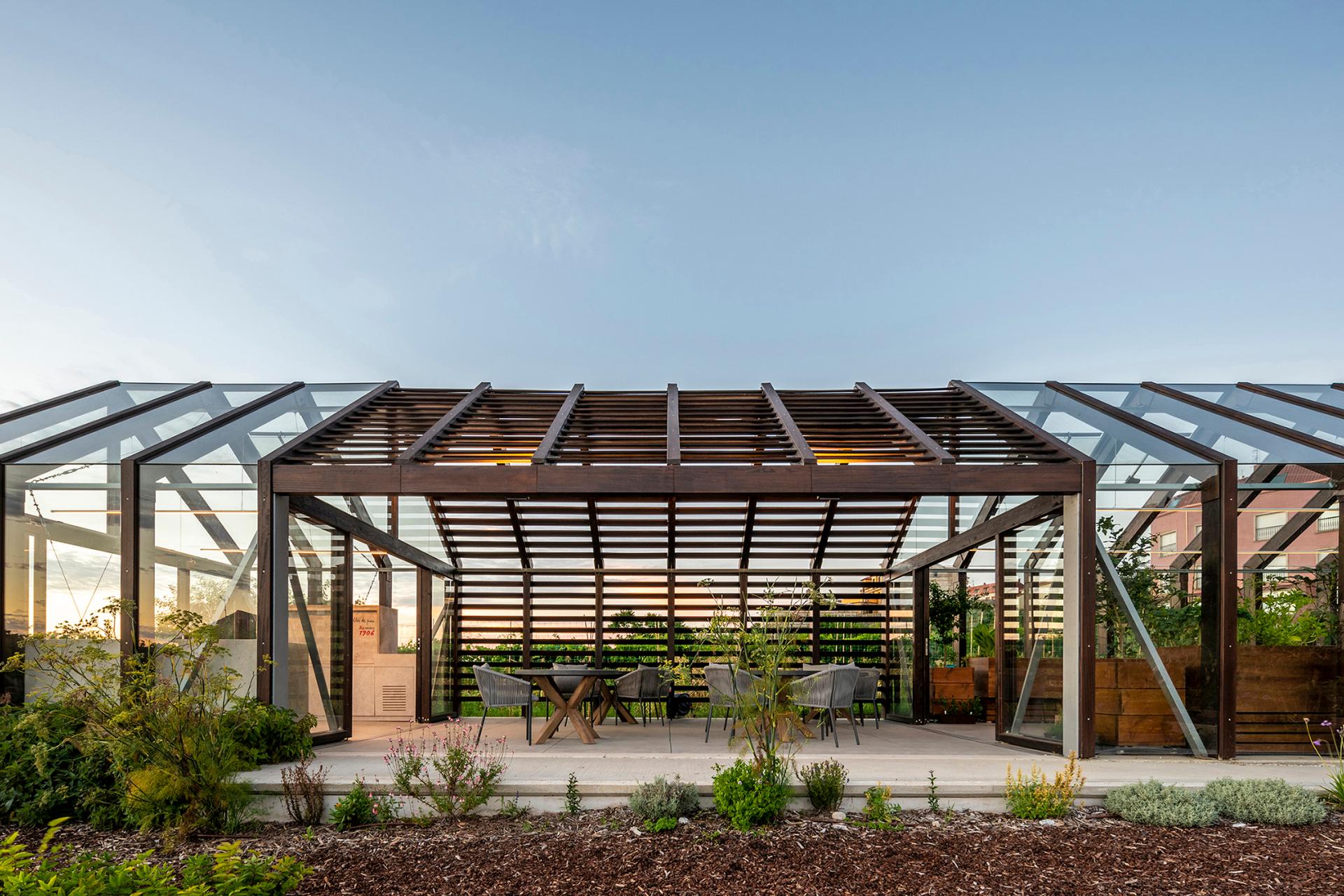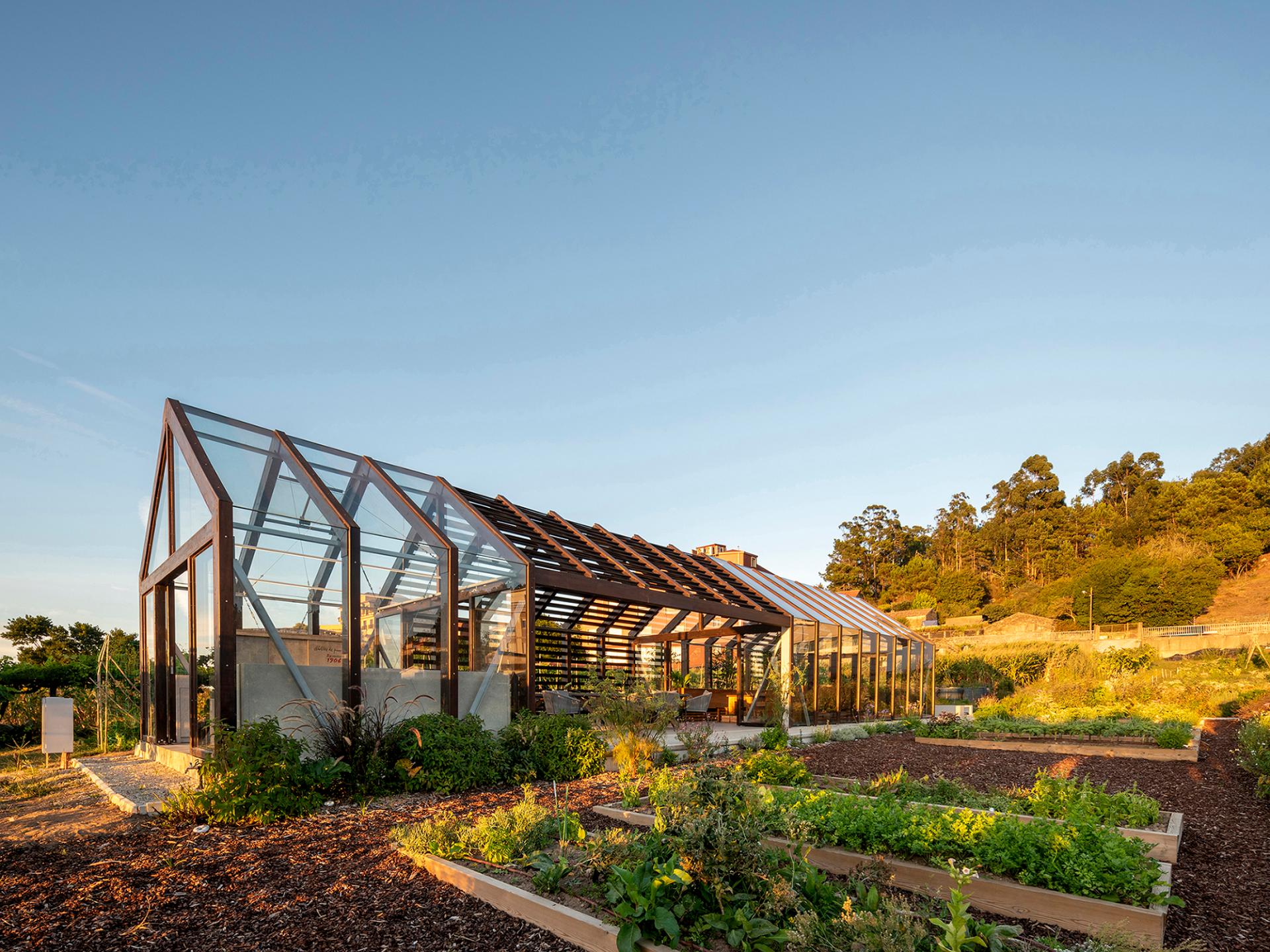The “Culler de Pau” Greenhouse Project
Basic information
Project Title
The “Culler de Pau” Greenhouse Project
Full project title
Orchard and greenhouse for Culler de pau restaurant (O Grove, Spain)
Category
Reconnecting with nature
Project Description
The “Culler de Pau” Greenhouse Project is a multidisciplinary initiative based on the development of a greenhouse and orchards to provide sustainable, tasty and quality products for offering a culinary experience that promotes sustainable tourism from a perspective that has sustainability, reconnection with nature and traditional agricultural heritage.
It has been promoted by the Culler de Pau restaurant, located in the Spanish region of Galicia.
It has been promoted by the Culler de Pau restaurant, located in the Spanish region of Galicia.
Geographical Scope
Regional
Project Region
Galicia - Spain, Spain
Urban or rural issues
Mainly rural
Physical or other transformations
It refers to other types of transformations (soft investment)
EU Programme or fund
No
Description of the project
Summary
The “Culler de Pau” Greenhouse Project is a multidisciplinary initiative based on the development of a greenhouse and orchards to provide sustainable, tasty and quality products for offering a culinary experience that promotes sustainable tourism. It has been promoted by the Culler de Pau restaurant, located in the Spanish region of Galicia.
Its main aim is reinventing mainstream agricultural practices and tools from a perspective that has sustainability, reconnection with nature and traditional agricultural heritage, respect for the landscape and biodiversity recovery at its core.
Specifically, the Project pursued and achieved the following objectives:
- Architecture: Create a functional and attractive space based on the use of nature-based materials and that has circularity, resource efficiency and respect for nature and adjacent landscape as cornerstones.
- Hostelry and tourism: Facilitate sustainable practices, namely the use of local food products self-grown at the own initiative and provided by local farmers, strengthening local agricultural supply chain and adding value for the community.
- Biodiversity recovery: Restore agricultural heritage, combining traditional agricultural practices and innovative techniques to recover almost lost vegetable species.
This success has been possible thanks to the engagement of various key stakeholders, namely: the promoters of the Project (the Culler de Pau team), the architectural team (Prieto Patiño Arquitectos), a regional R&D center for biodiversity recovery through restoration of almost lost crops (Biomisión), and the network of local farmers that both benefit and cooperate with the Project.
The achievements have been so far recognized both by public institutions (with the Galician Architecture Sustainability Prize 2023 awarded by the regional government) and private organizations (with a Michelin Green Star 2023 and a Sol Sostenible Repsol 2023 – Repsol’s sustainability recognition to restaurants).
Its main aim is reinventing mainstream agricultural practices and tools from a perspective that has sustainability, reconnection with nature and traditional agricultural heritage, respect for the landscape and biodiversity recovery at its core.
Specifically, the Project pursued and achieved the following objectives:
- Architecture: Create a functional and attractive space based on the use of nature-based materials and that has circularity, resource efficiency and respect for nature and adjacent landscape as cornerstones.
- Hostelry and tourism: Facilitate sustainable practices, namely the use of local food products self-grown at the own initiative and provided by local farmers, strengthening local agricultural supply chain and adding value for the community.
- Biodiversity recovery: Restore agricultural heritage, combining traditional agricultural practices and innovative techniques to recover almost lost vegetable species.
This success has been possible thanks to the engagement of various key stakeholders, namely: the promoters of the Project (the Culler de Pau team), the architectural team (Prieto Patiño Arquitectos), a regional R&D center for biodiversity recovery through restoration of almost lost crops (Biomisión), and the network of local farmers that both benefit and cooperate with the Project.
The achievements have been so far recognized both by public institutions (with the Galician Architecture Sustainability Prize 2023 awarded by the regional government) and private organizations (with a Michelin Green Star 2023 and a Sol Sostenible Repsol 2023 – Repsol’s sustainability recognition to restaurants).
Key objectives for sustainability
Sustainability was at the core of the Project since its inception, both including the design and development of the constructive space itself – the greenhouse - which takes into account principles such as resource efficiency, circularity and respect for the local environment and landscape, as well as the conceptualization and implementation of the primary activity it was built for: obtaining km. 0, sustainable, tasty and quality products for offering a culinary experience that promotes sustainable tourism.
In this sense, its key sustainability objectives are:
Create a functional and attractive space (the greenhouse and the surrounding orchards) which uses nature-based materials and that has circularity, resource efficiency and respect for nature and adjacent landscape at its core. The objective from an architectural perspective is to be an opposite of the commonly used greenhouses in the Galicia region, which are seen as a mere utilitarian tool, having a high environmental and landscape impact.
Facilitate sustainable practices in hostelry and catering activities, namely the use of local food products self-grown at the own initiative and provided by local farmers. This allows the strengthening of local agricultural supply chains, adding value for the community at the same time that has a reduced environmental impact, compared to the mainsprings global supply chains often used in hostelry.
Restore cultural and agricultural heritage, combining traditional agricultural practices and innovative techniques to restore biodiversity and recover almost lost crops and species.
The “Culler de Pau” Greenhouse Project is therefore an example of how to reinvent a commonly high impact activity and its tools (i.e. hostelry and aggressive agricultural techniques developed in non-sustainable greenhouses) on a more sustainable and respectful way taking into accounts all the spheres involved.
In this sense, its key sustainability objectives are:
Create a functional and attractive space (the greenhouse and the surrounding orchards) which uses nature-based materials and that has circularity, resource efficiency and respect for nature and adjacent landscape at its core. The objective from an architectural perspective is to be an opposite of the commonly used greenhouses in the Galicia region, which are seen as a mere utilitarian tool, having a high environmental and landscape impact.
Facilitate sustainable practices in hostelry and catering activities, namely the use of local food products self-grown at the own initiative and provided by local farmers. This allows the strengthening of local agricultural supply chains, adding value for the community at the same time that has a reduced environmental impact, compared to the mainsprings global supply chains often used in hostelry.
Restore cultural and agricultural heritage, combining traditional agricultural practices and innovative techniques to restore biodiversity and recover almost lost crops and species.
The “Culler de Pau” Greenhouse Project is therefore an example of how to reinvent a commonly high impact activity and its tools (i.e. hostelry and aggressive agricultural techniques developed in non-sustainable greenhouses) on a more sustainable and respectful way taking into accounts all the spheres involved.
Key objectives for aesthetics and quality
In the local Galician context, greenhouses are usually characterized for being a widely used agricultural solution but which does not take into consideration aesthetics or design approaches on their construction, directly affecting on a negative way on the landscape and the territory. In fact, these agricultural constructive elements are one of the main representatives of what is known as “feísmo gallego” – “Galician ugliness” (which could be defined as the architectural and urban degradation which affects the territory and the landscapes that conform it). Furthermore, most greenhouses in the region are quite far away from sustainability principles, since they are normally a construction based on plastics and other non-circular elements.
The “Culler de Pau” Greenhouse Project was designed from a standpoint were aesthetics, landscape respect, integration, and cultural uses promotion were a must. Hence, its design is based on recovering the traces of the plots and crops that structured the previous agricultural uses of the local context, re-dignifying the local landscape for its community. For doing so, photographs of American flights of the fifties were used as a reference for the original status of the territory, in order to build a space that includes orchards and the greenhouse.
A sequence of linear cultivation bands is complemented by a linear construction that, following the same lines, hosts the greenhouse and R&D center. An extremely light and permeable construction is created, which does not visually interrupt the linear morphology of the orchards, with a mixed structure of wooden porches and metal bracing, inspired by the efficiency and beauty of the structures of the adjacent vineyards.
Therefore, the Project represents a practical example of how traditionally “ugly” and non-landscape respectful elements can be rethought and reinvented in a positive way for the landscape itself, the territory and the surrounding community.
The “Culler de Pau” Greenhouse Project was designed from a standpoint were aesthetics, landscape respect, integration, and cultural uses promotion were a must. Hence, its design is based on recovering the traces of the plots and crops that structured the previous agricultural uses of the local context, re-dignifying the local landscape for its community. For doing so, photographs of American flights of the fifties were used as a reference for the original status of the territory, in order to build a space that includes orchards and the greenhouse.
A sequence of linear cultivation bands is complemented by a linear construction that, following the same lines, hosts the greenhouse and R&D center. An extremely light and permeable construction is created, which does not visually interrupt the linear morphology of the orchards, with a mixed structure of wooden porches and metal bracing, inspired by the efficiency and beauty of the structures of the adjacent vineyards.
Therefore, the Project represents a practical example of how traditionally “ugly” and non-landscape respectful elements can be rethought and reinvented in a positive way for the landscape itself, the territory and the surrounding community.
Key objectives for inclusion
One of the key elements of the success of the “Culler de Pau” Greenhouse Project is that the food product supply is based on a network of local farmers, that goes beyond the borders of the restaurant itself. The species raised in the greenhouse and surrounding orchards are produced on a limited number, since the agricultural angle of the Project is more focused on innovation and species recovery than on volumes. Therefore, for achieving the supply needed for the viability of the restaurant, it relies on a network of local farmers. They are more than mere suppliers. In fact, they have become an essential part of the Project, acting as both knowledge disseminators and receptors. The “Culler de Pau” Greenhouse Project benefits from the experience and know-how of these local farmers, and they benefit from the innovative tools and techniques generated at the Project and the species recovered by it, as well as from the economic benefits that it offers to them.
Moreover, the “Culler de Pau” Greenhouse Project also opens its doors to local professional schools, acting as a knowledge hub for agricultural related studies in the area. Therefore, transferring the acquired innovative experiences to the local and regional future professionals, aiming to promote and strengthened on them that traditional production practices and elements such as greenhouse could be reinvented on a more sustainable and respectful way.
Moreover, the “Culler de Pau” Greenhouse Project also opens its doors to local professional schools, acting as a knowledge hub for agricultural related studies in the area. Therefore, transferring the acquired innovative experiences to the local and regional future professionals, aiming to promote and strengthened on them that traditional production practices and elements such as greenhouse could be reinvented on a more sustainable and respectful way.
Results in relation to category
The Project has been so far a success, having positive results and impacts on all its initial targets:
- A functional and attractive space was created, achieving its related sustainability goals in terms of the use of nature-based materials, resource efficiency, circularity and respect for nature and adjacent landscape. This was recognized by the regional authorities, awarding the Project with the Galician Architecture and Rehabilitation Sustainability Prize.
- Sustainable practices in hostelry and catering activities are currently being applied by the use of local food products self-grown at the own initiative and provided by local farmers. This has allowed the strengthening of local agricultural supply chains, adding value for the community. This is shown by the fact that the Project has been chosen as the host of the Galicia Sustainable Destination initiative, promoted by the “Xunta de Galicia”, recognizing the work of Culler de Pau to make the region a benchmark of sustainable tourism.
- Restoration of agricultural heritage, combining traditional agricultural practices and innovative techniques that have allowed the restoration of biodiversity and recovery of almost lost local crops and species.
The “Culler de Pau” Greenhouse Project is therefore an example of how to reinvent a commonly high impact activity and its tools (i.e. hostelry and aggressive agricultural techniques developed in non-sustainable greenhouses) enabling different stakeholders and the local community to reconnect with nature and with traditional landscapes at the same time that has contributed to regenerate natural ecosystems and restore biodiversity.
- A functional and attractive space was created, achieving its related sustainability goals in terms of the use of nature-based materials, resource efficiency, circularity and respect for nature and adjacent landscape. This was recognized by the regional authorities, awarding the Project with the Galician Architecture and Rehabilitation Sustainability Prize.
- Sustainable practices in hostelry and catering activities are currently being applied by the use of local food products self-grown at the own initiative and provided by local farmers. This has allowed the strengthening of local agricultural supply chains, adding value for the community. This is shown by the fact that the Project has been chosen as the host of the Galicia Sustainable Destination initiative, promoted by the “Xunta de Galicia”, recognizing the work of Culler de Pau to make the region a benchmark of sustainable tourism.
- Restoration of agricultural heritage, combining traditional agricultural practices and innovative techniques that have allowed the restoration of biodiversity and recovery of almost lost local crops and species.
The “Culler de Pau” Greenhouse Project is therefore an example of how to reinvent a commonly high impact activity and its tools (i.e. hostelry and aggressive agricultural techniques developed in non-sustainable greenhouses) enabling different stakeholders and the local community to reconnect with nature and with traditional landscapes at the same time that has contributed to regenerate natural ecosystems and restore biodiversity.
How Citizens benefit
As explained on the previous point, local farmers are a key part of the “Culler de Pau” Greenhouse Project, not only for the development of its regular activity, but also for its design. Hence, the knowledge transmitted by them was considered while conceptualizing the project and the architectural solution, using their experience as a very valuable tool for reinventing the usual solutions on an aesthetic and sustainable way.
Physical or other transformations
It refers to other types of transformations (soft investment)
Innovative character
The “Culler de Pau” Greenhouse Project has innovation imbedded in its DNA. The Project has reinvented a common agricultural solution (a greenhouse) putting sustainability and respect for its environment at the core. Its design is based on the use of nature based and recyclable materials (such as wood and glass), instead of plastics as mainstream greenhouses in the area. This allows creating an extremely light and permeable construction, which has circularity as a key feature, as it was built on a way that allows its complete disassembly and reuse in the future without leaving any traces on the territory.
Usually, greenhouses in the Galicia region are seen as a mere utilitarian tool, having a high environmental impact. However, resource efficiency is also a key feature of the Project. For instance, temperature and humidity regulation is achieved through sliding doors in the end walls that allow the sea breeze to pass through them and a system of automated sliding windows on the deck, linked to the open joints in the glass panels and the ridge, obtaining a tool for scientific control of natural elements.
Rainwater is collected in perimeter drainage tubes and reused for irrigation and for the fountain designed for hydroponic crops, which allows both water and energy efficiency. Responsible waste management was also considered, as composters are integrated into this productive space, allowing the reuse of the organic waste.
Furthermore, the greenhouse is totally integrated in the landscape, which is not the common situation with greenhouses in the region, which alter and disfigure the landscape. In this Project case, the greenhouse was designed for not visually interrupting the linear structure of the nearby orchards, with a mixed structure of wooden porches and metal bracing, inspired by the efficiency and beauty of the structures of the adjacent vineyards.
Usually, greenhouses in the Galicia region are seen as a mere utilitarian tool, having a high environmental impact. However, resource efficiency is also a key feature of the Project. For instance, temperature and humidity regulation is achieved through sliding doors in the end walls that allow the sea breeze to pass through them and a system of automated sliding windows on the deck, linked to the open joints in the glass panels and the ridge, obtaining a tool for scientific control of natural elements.
Rainwater is collected in perimeter drainage tubes and reused for irrigation and for the fountain designed for hydroponic crops, which allows both water and energy efficiency. Responsible waste management was also considered, as composters are integrated into this productive space, allowing the reuse of the organic waste.
Furthermore, the greenhouse is totally integrated in the landscape, which is not the common situation with greenhouses in the region, which alter and disfigure the landscape. In this Project case, the greenhouse was designed for not visually interrupting the linear structure of the nearby orchards, with a mixed structure of wooden porches and metal bracing, inspired by the efficiency and beauty of the structures of the adjacent vineyards.
Disciplines/knowledge reflected
One of the initial targets of this Project was to create bridges between the kitchen of the restaurant and the actual field from where its raw materials come, expanding the investigation done on the first to the last one. This was successfully achieved thanks to the interaction between the various disciplines that were involved in the design and implementation of the Project, namely:
- Tourism and hostelry: The “Culler de Pau” is a well-known restaurant in the region, with more than 14 years of experience in the area, and with a number of national and international recognitions (such as a double Michelin star and a Michelin Green star). They acted as promotors of the Project, which would not have been possible without their experience.
- Agriculture: The project relies on a network of local farmers which enrich it with their know-how from the production perspective. Moreover, without the proximity and quality products supplied by them, it would be impossible to achieve one of the key objectives of the “Culler de Pau” philosophy of being interpreters of the territory, “cooking the local environment”.
- R&D on agriculture and biodiversity recovery: As explained on previous question, one of the strategic partners of the project is the organization “Biomisión”, are key for the recovery of different crops grown.
- Architecture: The architects involved in the creation of the Project (Prieto Patiño Arquitectos) provided as a value added not only their technical knowledge, but also their concern about sustainability, energy and resource efficiency, environmental responsibility and respect for the landscape, becoming these elements cornerstones of the architectural sphere of the Project as well.
All the different stakeholders engaged in permanent dialogue during the drafting of the Project and its implementation, making a multidisciplinary team with different skills that are all together fundamental for its success.
- Tourism and hostelry: The “Culler de Pau” is a well-known restaurant in the region, with more than 14 years of experience in the area, and with a number of national and international recognitions (such as a double Michelin star and a Michelin Green star). They acted as promotors of the Project, which would not have been possible without their experience.
- Agriculture: The project relies on a network of local farmers which enrich it with their know-how from the production perspective. Moreover, without the proximity and quality products supplied by them, it would be impossible to achieve one of the key objectives of the “Culler de Pau” philosophy of being interpreters of the territory, “cooking the local environment”.
- R&D on agriculture and biodiversity recovery: As explained on previous question, one of the strategic partners of the project is the organization “Biomisión”, are key for the recovery of different crops grown.
- Architecture: The architects involved in the creation of the Project (Prieto Patiño Arquitectos) provided as a value added not only their technical knowledge, but also their concern about sustainability, energy and resource efficiency, environmental responsibility and respect for the landscape, becoming these elements cornerstones of the architectural sphere of the Project as well.
All the different stakeholders engaged in permanent dialogue during the drafting of the Project and its implementation, making a multidisciplinary team with different skills that are all together fundamental for its success.
Methodology used
As a summary of what has been exposed on previous points, the approach used in the “Culler de Pau” Greenhouse Project was to reinvent a common non-sustainable, non-landscape respectful solution from a standpoint were aesthetics, landscape respect, integration, and cultural uses promotion were a must. It is based on sustainability principles applied to construction, agriculture and tourism practices, becoming a multidisciplinary initiative that enables reconnection with nature and tradition for its users, including both the professionals that are engaged on the initiative itself and the end consumers that enjoy its results.
How stakeholders are engaged
Developing an initiative such as the “Culler de Pau” Greenhouse Project requires the engagement of different type of stakeholders, both during the design and implementation phase. The following could be highlighted:
- Local authorities: The City Council of O Grove, were the Project is located, was involved during the design phase, giving technical advice for the architectural aspects of it.
- Regional authorities (mainly, the regional government “Xunta de Galicia”): They were involved during the implementation phase of the Project, since it was partially financed with a grant from this authority. Furthermore, the regional government has recognized the success of the Project and its sustainable attributes in different occasions, using it as benchmark of sustainable tourism and architecture. On the one hand, the Project has been awarded with the 2023 Galician Sustainable Architecture Prize given by this institution. On the other, the Project has been chosen as the host of the Galicia Sustainable Destination initiative, promoted by the “Xunta de Galicia”, recognizing the work of Culler de Pau to make the region a benchmark of sustainable tourism.
-Regional R&D centers: One of the strategic partners of the project is the organization “Biomisión”, a scientific dissemination project on the importance of crops and seed banks as instruments to maintain and recover biodiversity. They cooperate with the Project on the recovery of different crops that were traditionally grown in Galicia but that were abandoned for various reasons. They act as advisors, providing their knowledge for the success of the innovations carried out at the plantations of the “Culler de Pau” Greenhouse Project, while the Project itself acts for them as a space for the recovery and promotion of these lost species.
-Local farmers: As explained on previous questions, the engagement of the local network of farmers was key since the very outset of the Project and continues to be.
- Local authorities: The City Council of O Grove, were the Project is located, was involved during the design phase, giving technical advice for the architectural aspects of it.
- Regional authorities (mainly, the regional government “Xunta de Galicia”): They were involved during the implementation phase of the Project, since it was partially financed with a grant from this authority. Furthermore, the regional government has recognized the success of the Project and its sustainable attributes in different occasions, using it as benchmark of sustainable tourism and architecture. On the one hand, the Project has been awarded with the 2023 Galician Sustainable Architecture Prize given by this institution. On the other, the Project has been chosen as the host of the Galicia Sustainable Destination initiative, promoted by the “Xunta de Galicia”, recognizing the work of Culler de Pau to make the region a benchmark of sustainable tourism.
-Regional R&D centers: One of the strategic partners of the project is the organization “Biomisión”, a scientific dissemination project on the importance of crops and seed banks as instruments to maintain and recover biodiversity. They cooperate with the Project on the recovery of different crops that were traditionally grown in Galicia but that were abandoned for various reasons. They act as advisors, providing their knowledge for the success of the innovations carried out at the plantations of the “Culler de Pau” Greenhouse Project, while the Project itself acts for them as a space for the recovery and promotion of these lost species.
-Local farmers: As explained on previous questions, the engagement of the local network of farmers was key since the very outset of the Project and continues to be.
Global challenges
Hostelry and catering activities are often characterised for relying on long and complex supply chains for acquiring the products that their clients are demanding. This situation has various inherent challenges in terms of environmental impacts such as climate change, biodiversity degradation, inefficient use of resources, among others.
The “Culler de Pau” Greenhouse Project tries to give a local answer to these challenges by sifting to a shorter food supply chain model, which relies on a network of local producers and its own grown products. As a consequence, there is a lower impact on the environment in terms of emissions associated with the transport of the products, a more efficient use of resources, and even a positive impact in terms of biodiversity recovery in the region, enabled by the efforts developed to restore ancient crops.
The “Culler de Pau” Greenhouse Project tries to give a local answer to these challenges by sifting to a shorter food supply chain model, which relies on a network of local producers and its own grown products. As a consequence, there is a lower impact on the environment in terms of emissions associated with the transport of the products, a more efficient use of resources, and even a positive impact in terms of biodiversity recovery in the region, enabled by the efforts developed to restore ancient crops.
Learning transferred to other parties
The learnings gathered during the implementation of the Project in terms of sustainable and innovative agriculture techniques, recuperation of almost lost crops and biodiversity restoration could be - and in fact are currently being transferred - not only to the direct beneficiaries of the Project but also to other farmers and professionals. The aim is to do not limit the knowledge acquired to the “Culler de Pau” borders, but to expand it to every interested farmer. It is not necessary that those are located on a similar environment as the Galician one, as the techniques could be adapted to other areas with different characteristics such as climate, soil quality etc. The crops to be restored and grown would change, but not the subjacent methodology and innovations applied.
In addition, the greenhouse building itself could be also replicated in other places or contexts. For doing so, its aesthetic aspects would require some adaptations to the new territory/landscape features, in order to maintain the philosophy of integration with the local environment and nature. However, the principles on which its design and construction are based on would remain the same: sustainability, circularity, integration with the landscape and integration with the surrounding nature. Furthermore, it is a simple constructive solution which uses industrialized systems. Hence, it does not require a highly specialized manpower and could be easily replicated in any other context.
In addition, the greenhouse building itself could be also replicated in other places or contexts. For doing so, its aesthetic aspects would require some adaptations to the new territory/landscape features, in order to maintain the philosophy of integration with the local environment and nature. However, the principles on which its design and construction are based on would remain the same: sustainability, circularity, integration with the landscape and integration with the surrounding nature. Furthermore, it is a simple constructive solution which uses industrialized systems. Hence, it does not require a highly specialized manpower and could be easily replicated in any other context.
Keywords
Sustainable hostelry, tourism and architecture
Nature and landscape integration and respect
Biodiversity recovery
Slow and local food chains
Promoting and dignifying local agricultural heritage

